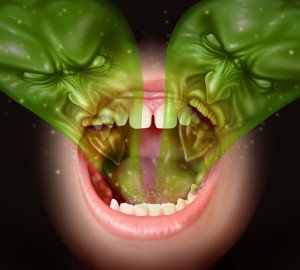Types Of Periodontal Disease To Be Aware Of
 The terminology “periodontal disease” usually refers to one of two conditions namely, gum disease or periodontitis. This is a progressive disease that adversely affects the tissue that surrounds and supports the gums as well as the jawbone. If these conditions go untreated, you may experience more severe conditions such as tooth loss and/or loose and unstable teeth. In fact, periodontal disease has long been recognized as the primary cause of losing teeth in adult age groups.
The terminology “periodontal disease” usually refers to one of two conditions namely, gum disease or periodontitis. This is a progressive disease that adversely affects the tissue that surrounds and supports the gums as well as the jawbone. If these conditions go untreated, you may experience more severe conditions such as tooth loss and/or loose and unstable teeth. In fact, periodontal disease has long been recognized as the primary cause of losing teeth in adult age groups.
The Mechanism Of Periodontal Disease
This condition typically starts when plaque toxins begin attacking the gingival or soft tissue that surrounds your teeth. The bacteria embed itself in the tissues, breed rapidly, and lead to the onset of bacterial infection. The infection progresses deeper into the tissues which causes the areas between the gums and teeth to become inflamed and irritated. As your body’s defenses begin attacking the infection, the gums begin receding causing the pockets between the gums and teeth grow deeper. Eventually, jawbone tissue starts receding as well and results in tooth loss and/or very unstable teeth.
Different Forms Of The Disease
There are a number of forms that periodontal disease takes and a number of different ways in which they typically manifest themselves. Make no mistake about it, every condition should be treated as soon as it is diagnosed so the bone and gum tissue can be saved. The following are some of the more common forms of periodontal disease that we have treated here at Community Dental Group:
Aggressive periodontal disease – the most common characteristic of this form of the disease is the rapid loss of bone tissue and gum tissue attachment. It is very similar to the chronic form (see next) but it progresses much quicker. Families with a history of the disease and smokers are at the greatest risk of developing the aggressive form of the disease.
Chronic periodontal disease – this form occurs more frequently after an individual has reached 45 years of age and is characterized by inflammation in the areas beneath the gum line and a progressive destruction of the bone and gum tissues.
Gingivitis – this is the most common and mildest form of the disease and is caused by plaque toxins. Individuals suffering with uncontrolled diabetes, individuals who control their blood pressure or seizures with medication, pregnant women, and women on birth control tend to be the ones that are at the greatest risk of developing gingivitis.
Necrotizing periodontal disease – individuals who are suffering from chronic stress, HIV, immunosuppression, and malnutrition as well as tobacco smokers are at the greatest risk of developing this form of the disease. This form of the disease is extremely rare and very difficult to treat.
Relative to systemic conditions – periodontal disease may also be a symptom of some other condition or disease and oftentimes progresses rapidly like the aggressive form (see above). Common co-factors of the disease include diabetes, heart disease, and respiratory disease.
The bottom line is that you have a better chance of preventing these conditions with proper dental hygiene and regular visits to our office. Remember, your permanent teeth cannot be replaced, so take care of them daily.